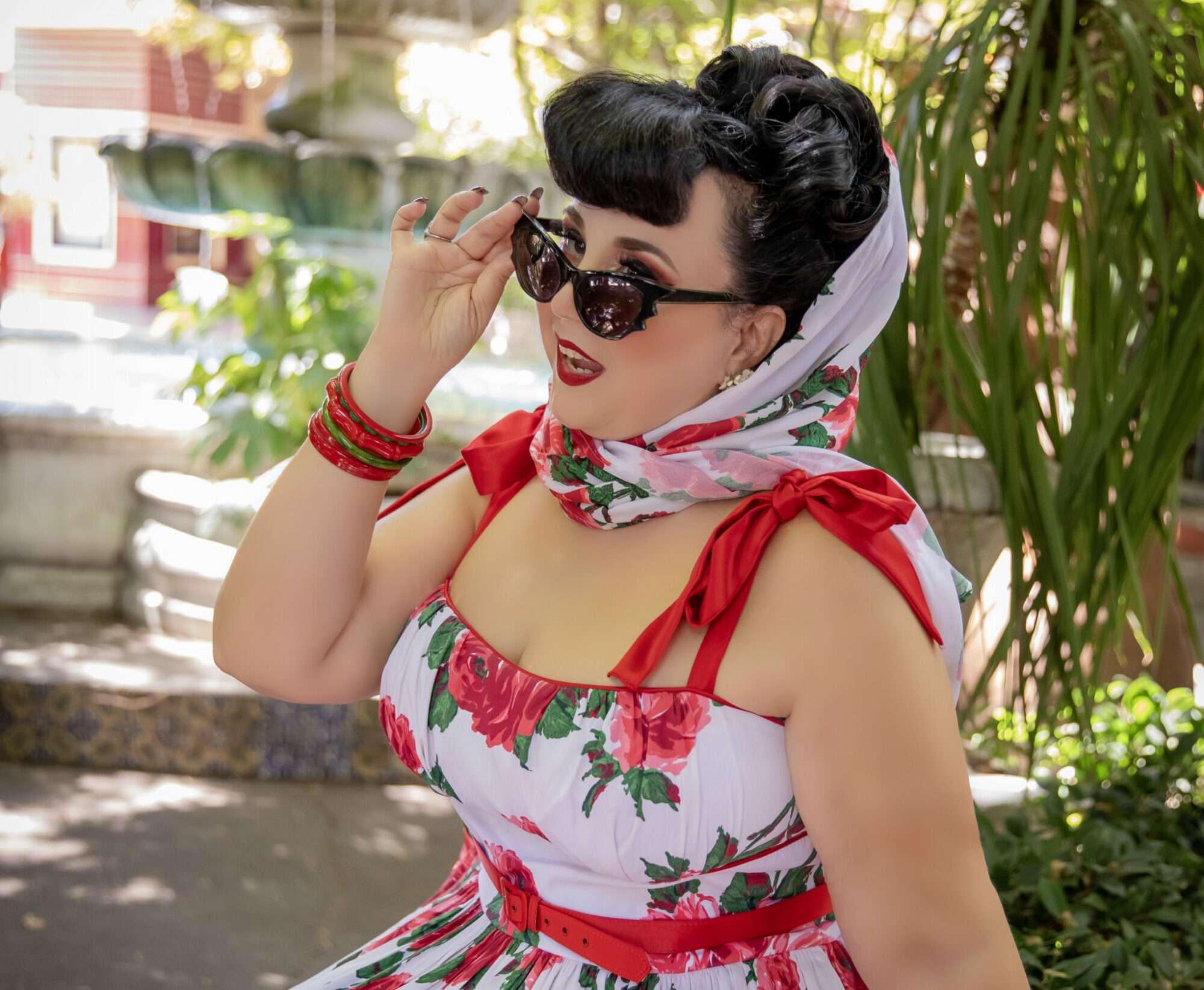The June issue of Bombshell magazine is out! My Hearst Castle-inspired set by Marilee Caruso (who also did the makeup and hair) is in Book 1, including the inside cover facing the table of contents. If you want to grab this – or any – Magcloud publication on sale, there’s a discount code right now: MAG25.

Since I am a huge fan of William Randolph Hearst’s La Cuesta Encantata estate (“the enchanted hill,” now a California State Park located near San Simeon, CA), I wanted to incorporate a sliver of the atmosphere there. Virtually all aspects of the architecture and decoration were overseen by architect and Berkeley grad (Go Bears!) Julia Morgan over nearly three decades, and it remains one of her most impressive projects.

Since we couldn’t shoot at the actual house, we adapted Marilee’s “study” setup to double as W.R.’s library. The original room is very Spanish Baroque in ways that only a wealthy media mogul who collected lots of European antiques can replicate, but we did our best. I added a reproduction Greek vase (dude collected tons of art, including a huge ancient pottery collection from Greek antiquity which he highlighted in his library) and my “Citizen Kane” snowglobe to the studio set.
Marilee put images from my Film Noir shoot on the late 1940s tv console to add another layer of meaning, as both Hearst and Marion Davies (his girlfriend and major silent era and golden age of Hollywood star) were involved in the early American film industry. Given the tv cabinet and the more mid-century look of the studio set, we couldn’t do 1920s or 30s. And since the house was closed during World War II and Mr. Hearst and Davies left the house in 1947 due to the former’s ill health, we figured a small evening party in 1946 or 1947 “coulda happened” like this.
You can find this and all my issues via my Linktree.



